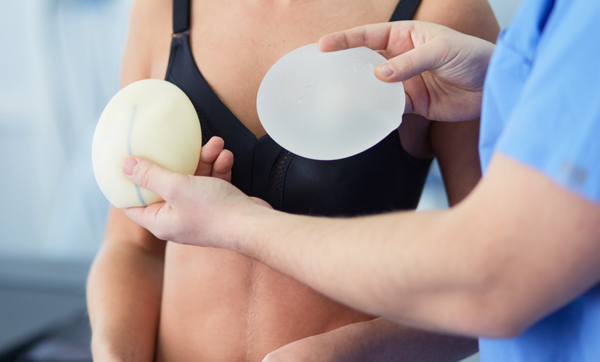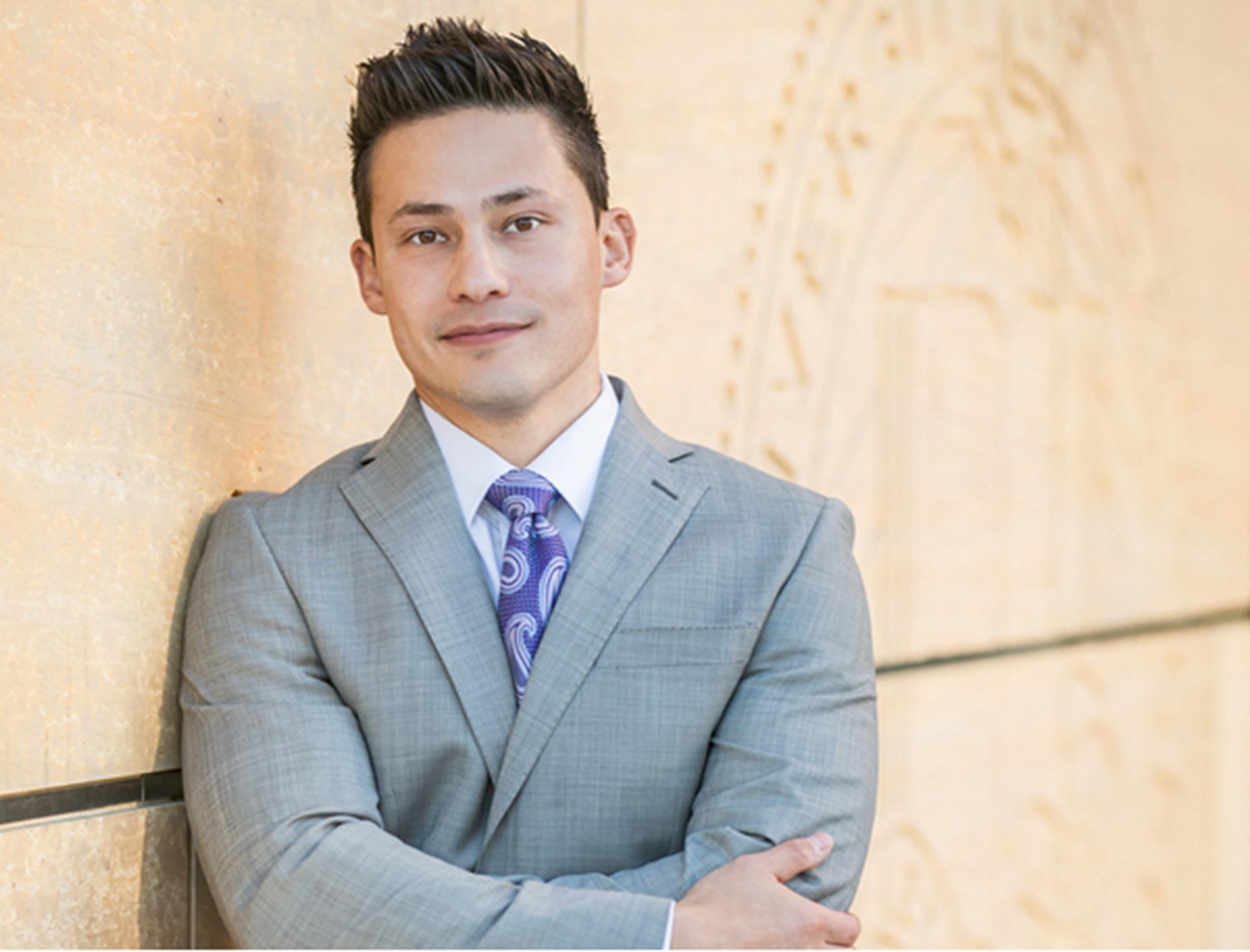NEWPORT BEACH, CA / ACCESSWIRE / December 3, 2023 / A breast lift, medically referred to as mastopexy, is a surgical procedure aimed at altering the shape and elevation of the breasts. It addresses the common issue of sagging breasts that may result from aging, gravity, weight fluctuations, or breastfeeding. The procedure involves the removal of excess skin and the tightening of surrounding tissues. Many women are turning to breast lifts to rejuvenate their figure with a breast profile that is more uplifted and youthful. There are ten key questions women need to know before considering breast lift or implant surgery.

Many women have varying breast sizes and turn to breast implants or breast lift surgery to improve their figure with an uplifting breast profile. Image Credit: Serezniy / 123RF.
"Asking the right questions about breast lifts and breast implants are essential for women contemplating these cosmetic procedures. For a deeper understanding and personalized guidance as it relates to your particular body, it's best to schedule a professional consultation with a board-certified plastic surgeon," said Dr. Brandon Richland, MD.
Dr. Richland is a well-known and respected Board-Certified Newport Beach Plastic Surgeon in Orange County/Southern California that specializes in cosmetic and reconstructive surgeries. He is dedicated to helping both women and men look and feel their absolute best.
Here are the Top 10 Breast Lift Plastic Surgery Questions Women Need to Ask Before Considering a Board-Certified Plastic Surgeon:
- What is a Breast Lift?
- How Much is a Breast Lift?
- How Long Does a Breast Lift Last?
- How Does a Breast Lift Work?
- How Long Does it Take For Nipples to Heal After a Breast Lift?
- How Much is a Breast Lift With Implants?
- How Painful is Breast Lift Recovery?
- When Can I Lift Weights After Breast Implants?
- When Can I Wear a Regular Bra After a Breast Lift?
- How Long Should Surgical Tape Stay On After a Breast Lift?
1. What is a Breast Lift?
A breast lift, or mastopexy, is a type of surgery that should be performed by a board-certified plastic surgeon aiming to raise and reshape breasts that may have sagged as a result of aging, pregnancy, or weight fluctuations. The procedure addresses the contour and elevation of the breasts by removing excess skin and tightening the remaining tissue. This surgical approach not only elevates the position of the breasts but can also reposition downward-pointing nipples to create a more youthful and aesthetically pleasing breast profile.
During a breast lift procedure, the plastic surgeon makes incisions in prescribed patterns depending on the extent of the lift required and individual patient characteristics. After excising the unnecessary skin, the surgeon repositions and reshapes the underlying breast tissue. The goal is to distribute the breast tissue more evenly and secure it for a long-lasting result. A lift may also include resizing the areola to complement the new breast shape.
People elect to have breast lift surgery for various reasons, from desire for a more youthful figure to rectifying changes in the breast tissue post-pregnancy or breastfeeding. While many individuals explore breast augmentation options, some consider natural alternatives such as fat transfer augmentation, which can simultaneously enhance breast volume and lift the breasts without implants.
It's paramount for anyone considering this surgery to have realistic expectations about both the process and the outcomes. Viewing before and after photos of breast lifts and augmentations can aid in forming realistic goals and aid in the decision-making process for potential surgery. Each person's journey and results will be unique, and consulting with a board-certified plastic surgeon is essential to assess suitability for the procedure.
2. How Much is a Breast Lift?
The cost of a breast lift, also known as mastopexy, is a consideration for many individuals seeking to alter the shape of their breasts. The American Society of Plastic Surgeons states the procedure's average cost was $5,817. It is important to remember that this figure is a part of the total fee which does not cover additional expenses such as anesthesia, facility fees, and other related costs.
The average national surgeon's fee is $4,864 and the average total cost for a breast lift is around $3,700 to $16,000 (varying by patient reviews).
A breast lift may be performed independently or alongside other procedures, which can affect the overall cost. Patients considering this surgery should note that health insurance typically does not cover cosmetic surgeries, including breast lifts, unless deemed medically necessary.
Various financing options can make the surgery more accessible. Exploring these options is recommended to better understand the full financial implications. The American Society of Plastic Surgeons provides guidelines regarding the costs and factors to consider, while interested individuals might find additional insights into financing options and a comprehensive cost breakdown at Breast Augmentation Price Factors You Should Consider.
3. How Long Does a Breast Lift Last?
A breast lift, or mastopexy, is a surgical procedure aimed at raising and reshaping breasts that have sagged as a result of aging, gravity, and other factors. The longevity of breast lift results can greatly vary from person to person.
Several factors influence the duration of breast lift outcomes:
- Aging: Over time, natural aging processes can make the skin lose elasticity.
- Gravity: Constant gravitational pull can lead to stretching of breast tissues.
- Skin Quality and Elasticity: Better skin quality can contribute to more enduring results.
- Weight Fluctuations: Significant weight gain or loss can negatively impact the sustainability of the lift.
- Pregnancy and Breastfeeding: These can significantly change breast size and shape, possibly compromising the lift's longevity.
Typically, patients can anticipate their breast lift to maintain its form for several years. However, it's crucial to acknowledge that while a breast lift can remarkably counteract sagging, some of the natural factors that initially led to changes in the breasts, such as elasticity and gravity, will continue to have an effect.
To help maintain results, one should:
- Maintain a stable weight
- Wear supportive bras
- Practice good skincare
Patients might opt for minor revisions over the years to address any changes due to continued aging and lifestyle factors. Breastfeeding, which is a consideration for many, might also affect the breast's shape post-surgery, although a lift doesn't usually restrict the ability to breastfeed.
A detailed discussion with a board-certified surgeon is always recommended to set realistic expectations regarding the results' durability.
4. How Does a Breast Lift Work?
A breast lift, scientifically termed mastopexy, is a surgical procedure intended to improve the appearance of sagging breasts. The process involves a surgeon making precise incisions on the breast to allow for the removal of excess skin and the reshaping of breast tissue. Through this technique, the breasts are raised, and the nipples and areola can be repositioned to a more youthful height.
The typical steps of a breast lift might include:
- Assessment: The surgeon evaluates the degree of sagging and devises a customized plan.
- Incision: Common incision patterns include around the areola, vertically down from the areola to the breast crease, and horizontally along the breast crease.
- Reshaping: Excess skin is removed, and underlying breast tissue is lifted and reshaped.
- Repositioning: Nipples and areolas are raised to a more natural position.
- Closing the Incisions: Incisions are usually closed with sutures, skin adhesives, or surgical tape.
The objective is not only to lift the breast but also to improve its shape and firmness. One should choose a skilled professional, like Dr. Brandon Richland, considering that the success of the procedure heavily depends on the surgeon's expertise.
Each breast lift is tailored to the individual's anatomy and goals, and the method chosen will impact the location and visibility of scars. Post-operation, the surgeon will provide guidelines on care and recovery to optimize the healing process.
5. How Long Does it Take For Nipples to Heal After a Breast Lift?
After undergoing a breast lift, patients are often concerned about the healing process, particularly regarding the nipples. Healing times can vary, but on average, the nipples and areola tend to heal within several weeks after the procedure. The total healing process for full sensation and scarring to settle can take several months.
Weeks 1-3 Post-Procedure:
- Bandages: Initially, bandages or surgical tape are applied to support the healing of incisions.
- Sensation: Patients may experience numbness or changes in nipple sensation. This is usually temporary.
Weeks 4-6 Post-Procedure:
- Scarring: The scars start to mature but will still be pink and noticeable.
- Sensation: Some return of sensation may be observed, but numbness can persist.
Months 2-6 Post-Procedure:
- Healing: The nipples continue to heal, and normal sensation often begins to return during this period.
- Scarring: Scars gradually fade but may take up to a year to become less noticeable.
Persistent Changes:
- Some patients may experience lasting changes in nipple sensation.
- Permanent scarring is inevitable, although it typically fades significantly over time.
It is imperative for patients to follow their surgeon's post-operative care instructions to ensure optimal healing. Keeping the areola and nipple area clean and avoiding strenuous activity that may strain the breast area are critical for a smooth recovery. If any concerns about the healing process arise, they should consult with their surgeon.
6. How Much is a Breast Lift With Implants?
The cost of a breast lift with implants incorporates a multitude of factors, including the surgeon's fee, the cost of the implants, operating room expenses, anesthesia, medical tests, and post-operative care. A breast lift, also known as mastopexy, combined with breast augmentation can rejuvenate the appearance by raising sagging breasts and adding volume.
On average, patients can expect to pay approximately $9,874 for a breast lift with implants, although prices can range from $5,000 to $17,000. This variation is influenced by geographical location, the experience of the plastic surgeon, and the specifics of the surgery.
It's crucial to note that most insurance plans do not cover cosmetic procedures like a breast lift with implants, considering them elective. However, if the surgery is part of breast reconstruction post-mastectomy or due to another medical condition, insurance may cover it. Individuals should also explore available financing options, which can make the procedure more accessible.
Those considering a breast lift with implant surgery should thoroughly research and discuss the potential costs and benefits with a qualified plastic surgeon. For individuals seeking a natural alternative to implants, fat transfer breast augmentation may be an option to consider for enhancing breast size and shape.
Patients should also understand that while costs are a significant factor, the surgeon's experience and the quality of care provided are paramount to the success of the surgery and overall satisfaction with the results. Making an informed decision about breast lift and augmentation costs can also significantly impact the experience and outcome.

Image Credit: Lenetssergey / 123RF.
7. How Painful is Breast Lift Recovery?
Breast lift recovery involves a period of discomfort and pain as the body heals from incisions and adjusts to the changes in breast tissue. Patients undergo general anesthesia or sedation during the procedure, ensuring they feel no pain at the time of surgery. Post-operative sensations typically range from soreness to moderate pain, which varies among individuals.
In the first few days post-surgery, pain management is essential. Surgeons often prescribe pain medication to help alleviate discomfort. Over-the-counter pain relievers may also be recommended as the healing progresses. Ice packs and special post-operative bras can provide additional relief and support.
The intensity of pain usually diminishes significantly within a week. However, swelling and sensitivity can continue for several weeks, and activities that might stress the breast area should be avoided. Patients should follow their surgeon's guidance, including wearing the appropriate support garments and attending scheduled follow-up appointments.
Recovery timelines can differ, and pain levels are subjective, but understanding the healing process for breast surgeries, including swelling reduction day by day, can help set realistic expectations. Proper rest, adhering to prescribed medication regimens, and avoiding strenuous activities contribute significantly to managing discomfort during the recovery from a breast lift procedure.
It's essential for patients to communicate with their healthcare provider about any concerns they may have during recovery, especially if pain increases or unusual symptoms occur. With time and care, the pain will subside, and the final results of the breast lift will be revealed.
8. When Can I Lift Weights After Breast Implants?
After receiving breast implants, patients are often eager to resume their exercise routines, particularly weight lifting. However, it is crucial to give the body time to heal to avoid complications and ensure the best outcome. The timeline for resuming weight lifting can vary depending on individual recovery progress, the type of surgery, and the advice of the plastic surgeon.
In the initial 2-3 weeks post-operation, the focus should be on gentle activities. Light walking is encouraged to maintain circulation and aid recovery, but heavy lifting should be avoided to protect the sutures and the breast tissue as it heals.
By 4-6 weeks, patients may be able to slowly introduce light exercises that do not strain the chest muscles or disrupt the breast implants. It is essential to follow the surgeon's recommendations closely during this period.
After 6 weeks, many surgeons advise that patients can gradually resume weight lifting. They should start with light weights and increase intensity incrementally, carefully monitoring for any discomfort or strain in the chest area.
- Patient Guidelines for Weight Lifting Post-Implants:
- Weeks 1-3: Avoid all weight lifting. Focus on walking and light daily activities.
- Weeks 4-6: Gradual reintroduction of light exercises, as directed by the plastic surgeon.
- Week 6 onwards: Slow return to weight lifting with light weights, progressively increasing as tolerated.
It is vital that patients maintain open communication with their plastic surgeon throughout recovery and adhere to their prescribed post-operative care plan. This guidance is critical not only for the aesthetics of the implants but also for the overall health and safety of the patient.
9. When Can I Wear a Regular Bra After a Breast Lift?
After a breast lift procedure, it's essential for patients to give their body ample time to heal before transitioning to regular bras. Initially, plastic surgeons advise wearing a surgical bra or a support bra around the clock.
- First Few Weeks: The importance of a surgical bra, which provides compression to reduce inflammation, cannot be understated. It offers support and protects the incision areas during the critical healing phase, typically recommended for 24 hours a day for the first two to three weeks post-surgery.
- Following Weeks: As healing progresses, patients may switch from the surgical bra to a soft support bra without underwire. This period often ranges from four to six weeks after the procedure, ensuring that the breasts are supported without being constricted.
- Three Months Mark: Before purchasing new regular bras, it is generally suggested to wait about three months. This allows the breast shape to settle and ensures the measurements for new bras are accurate.
It's crucial to follow specific guidance from one's plastic surgeon, as recovery can vary among individuals. For a comprehensive understanding of post-operative care and the benefits of compression bras for both comfort and healing, refer to Wearing Normal Bras After Breast Augmentation Surgery.
Remember, patience during recovery can lead to better healing and more satisfying results with one's enhanced breast shape.

Image Credit: Anima21 / 123RF.
10. How Long Should Surgical Tape Stay on After a Breast Lift?
The application of surgical tape over incisions is a common protocol followed by plastic surgeons to support the wounds as they heal. The period for which this tape should remain in place can vary depending on the surgeon's preference and the individual's healing process.
When discussing how long surgical tape should remain on after a breast lift, it's important to consider a few key aspects:
- Surgeon's Instructions: The duration for which surgical tape must be left on after a breast lift primarily depends on the surgeon's specific instructions. Surgeons usually provide personalized advice based on the individual's healing process, type of surgery performed, and any unique aspects of their medical history.
- Typical Duration: Generally, surgical tape is used to support the newly shaped breasts and to aid in the healing of incisions. It's often recommended to leave the tape on for about 1 to 2 weeks post-surgery, but this can vary.
- Purpose of the Tape: The tape helps in minimizing scarring, keeping the incisions clean, and preventing excessive movement that could disrupt the healing process. It's crucial not to remove the tape prematurely, as it could interfere with optimal healing.
- Signs to Watch For: If there are signs of infection, unusual discharge, or significant discomfort, it's important to contact the surgeon immediately. In such cases, the tape might need to be removed or replaced under medical supervision.
- Post-removal Care: After the surgical tape is removed, continued care is essential. This might include using scar-minimizing treatments, gentle cleaning of the area, and avoiding strenuous activities that could strain the breasts.
- Individual Healing Process: Everyone's body heals differently. Some may require the tape to be on longer, while others might be advised to remove it sooner.
The precise duration for keeping surgical tape on after a breast lift varies and should be guided by a surgeon's advice, tailored to the individual's specific surgical and healing circumstances. Regular follow-up appointments and adherence to post-operative care instructions are crucial for a successful recovery.

An experienced board-certified plastic surgeon like Dr. Brandon Richland, MD (pictured above) is the best option for achieving transformational results. Image Credit: RichlandMD.com
About Dr. Brandon Richland, MD:
Dr. Brandon Richland, MD is a respected Board Certified Licensed Plastic Surgeon in Orange County / Southern California specializing in cosmetic and reconstructive surgeries. Driven by his passion for medicine, Dr. Richland obtained his Doctor of Medicine (M.D.) degree from the prestigious program at Saint Louis University (SLU) School of Medicine in 2013. His exceptional skills were recognized when he received the McGraw Hill / Lange Medical Student Academic Achievement Award, and graduated top of his class with Honors. For his undergraduate degree, he attended University of California, Los Angeles (UCLA) and graduated with Honors in 2009.
To further enhance his surgical expertise, Dr. Richland completed his Residency in Plastic Surgery at the University of California, Irvine (UCI) from 2013 to 2019 earning the Academic Achievement Award twice during this period. A total of 14 years in dedicated schooling and medical residency. Dr. Richland is actively involved with healthcare and medical societies, as a Diplomate of the American Board of Plastic Surgery, a member of the American Society of Plastic Surgeons, American Society of Aesthetic Plastic Surgeons, and the California Society of Plastic Surgeons.
Located in one of these Orange County (OC) / Southern California cities?
Aliso Viejo, Anaheim, Brea, Buena Park, Costa Mesa, Coto de Caza, Cypress, Dana Point, Fountain Valley, Fullerton, Garden Grove, Huntington Beach, Irvine, La Habra, La Palma, Laguna Beach, Laguna Hills, Laguna Niguel, Laguna Woods, Ladera Ranch, Lake Forest, Los Alamitos, Mission Viejo, Newport Beach, Orange, Placentia, Rancho Santa Margarita, San Clemente, San Juan Capistrano, Santa Ana, Seal Beach, Stanton, Tustin, Villa Park, Westminster, or Yorba Linda?
Plastic Surgeon Dr. Brandon Richland, MD and his Cosmetic Aesthetics Team are ready to help you look and feel your absolute best. Elevate your confidence and self esteem levels to unfathomable new heights. A warm and engaging Team of carefully selected Aesthetics Professionals will make you feel calm, cool, collected, and right at home throughout your entire consultation and surgery process.
Schedule your in-person consultation in our modern and luxurious offices in either Fountain Valley, CA (Main HQ) or our Newport Beach, CA office. Live outside of Southern California or short on time? For your convenience, Virtual Consultations are also available.
CONTACT:
Dr. Brandon Richland, MD Inc.
Summer Mariorenzi
Media Relations
714-241-0646
summer@richlandmd.com
For Your Personalized First-Class Cosmetic and Aesthetics Experience, Schedule Your In-Person or Virtual Consultation:
https://www.richlandmd.com/contact-us/
Medical Disclaimer: The information shared is intended for informational purposes only and should not be construed as medical advice. Every individual and patient is different. Before considering any treatments or surgical procedures, be sure to consult with an experienced licensed healthcare provider to discuss the appropriateness and safety of any procedures or treatments based on your individual health and medical history.
SOURCE: Dr. Brandon Richland, MD
View the original press release on accesswire.com
